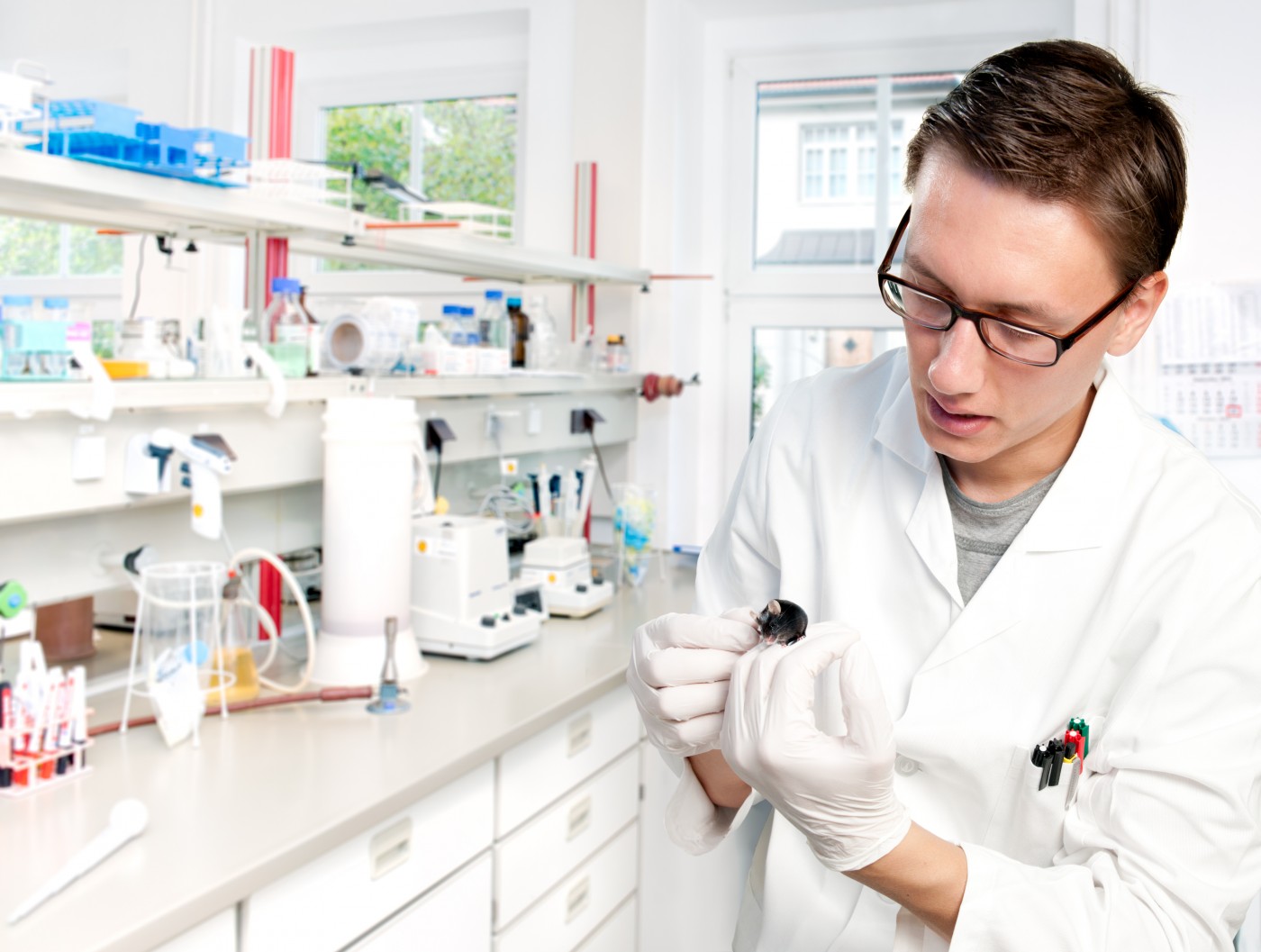A newly published study by scientists at the Université de Genéve (UNIGE) Faculty of Medicine, in Geneva, Switzerland, has revealed that gut microbiota plays a tremendous role in our bodies and symbiotically affects the functioning of our organs. In particular, the UNIGE scientists observe that microbiota have an impact on the way calories are absorbed and how fat develops.
By studying mice without microbiota (i.e., all microorganisms, mainly bacteria, inhabiting our gut), investigators were able to demonstrate how the absence of microbiota has a remarkable effect against obesity. Indeed, they found it triggers a surprising metabolic mechanism: white fat cells — which in excess cause obesity and insulin resistance — are transformed into cells similar to brown fat (actually called “beige fat”) that protects the body against excess weight and its damaging consequences. The scientists observe that this discovery, published in the journal Nature Medicine, could open the door to completely new anti-obesity treatments.
The paper, entitled “Microbiota depletion promotes browning of white adipose tissue and reduces obesity“ (Published online 16 November 2015 Nature Medicine (2015) doi:10.1038/nm.3994), is co-authored by Nicolas Surez-Zamorano, Salvatore Fabbiano, Claire Chevalier, Ozren Stojanovi, Ana Stevanovi, Christelle Veyrat-Durebex, Valentina Tarallo, Dorothé Rigo, Stéphane Germain, Miroslava Ilievska, Xavier Montet, Yann Seimbille, Siegfried Hapfelmeier and Mirko Trajkovski, variously representing the University of Geneva Faculty of Medicine, Department of Cell Physiology and Metabolism; the University of Geneva Hospitals Faculty of Medicine, Diabetes Centre and Centre for BioMedical Imaging (CIBM); Alkaloid AD Skopje, of Skopje, Republic of Macedonia; Geneva University Hospitals, Divisions of Radiology and Division of Nuclear Medicine Cyclotron Unit; the University of Bern Institute for Infectious Diseases in Bern, Switzerland; and the University College London (UCL), Division of Biosciences, Institute of Structural and Molecular Biology.
The paper co-authors note that mammals have two types of fat: brown fat, whose primary function is to burn calories to produce heat; and white fat, which is stored as energy.
In healthy humans, white adipose tissue constitutes about 25 percent of body mass. However, when in excess, white fat contributes to insulin resistance and diabetes. Conversely, brown adipose tissue (brown fat) improves insulin sensitivity and is reversely correlated to obesity, promoting a lean and healthy phenotype.
The scientists note that in response to cold or exercise, brown fat cells also emerge in the white adipose tissue (aka, beige cells), a process known as ‘browning.’ In the paper, the co-authors show that development of functional beige fat in the inguinal subcutaneous adipose tissue (ingSAT) and perigonadal visceral adipose tissue (pgVAT) is promoted by depletion of microbiota, either by means of antibiotic treatment or germ-free mice. This leads to improved glucose tolerance and insulin sensitivity and decreased white fat and adipocyte size in lean mice, obese leptin-deficient (ob/ob) mice, and high-fat diet-fed mice.
The Unexpected Role Of Gut Microbiota
A Université de Genéve release notes that only recently have scientists begun to grasp the extent of the relationships between gut microbiota and its human host, with an increasing number of studies now highlighting microbiota’s impact on the regulation of multiple metabolic pathways, thus interconnecting the gastrointestinal tract, skin, liver, brain, and other organs.
The UNIGE Faculty of Medicine researchers demonstrate that gut microbiota also have a direct impact on obesity: the microbiota of obese people having a specific composition that is different from the microbiota found in lean people. Indeed, the scientists note that germ-free mice (i.e., mice born and kept in sterile conditions without microbiota) that receive a gut microbiota transplant from obese people tend to develop obesity and insulin resistance.
 “Having observed that microbiota can affect the obesity onset, we suspected that microbiota depletion can change the insulin sensitivity by modifying the amount and balance of these various types of fat,” explains Mirko Trajkovski, lead author of the study and Professor at the Université de Genéve Faculty of Medicine, Department of Cell Physiology and Metabolism.
“Having observed that microbiota can affect the obesity onset, we suspected that microbiota depletion can change the insulin sensitivity by modifying the amount and balance of these various types of fat,” explains Mirko Trajkovski, lead author of the study and Professor at the Université de Genéve Faculty of Medicine, Department of Cell Physiology and Metabolism.
To confirm their hypothesis, the researchers fed three groups of mice a high-calorie diet: germ-free mice, standard mice, and mice previously treated with high doses of antibiotics that have a depleting effect on microbiota. While normal mice exposed to a high-calorie diet did develop obesity and insulin resistance, the two other groups remained lean, had an improved sensitivity to insulin, and tolerated glucose better. Importantly, their amount of white fat decreased, and this was accompanied with increased levels of brown fat markers.
The investigators also observed that depleting microbiota — either using antibiotics or in germ-free mice — stimulated development of functional beige fat within the white fat, in the same way as does exposure to cold or exercise.
“But how does this work?” they ask rhetorically. “It all has to do with a specific cell type, called macrophages. Macrophages are an essential component of the immune system and fulfill various metabolic functions, including tissue remodeling. They express different functional programs in response to micro-environmental signals, a process called ‘polarization.’ Polarized macrophages can be broadly classified in two main groups: M1 and M2, the latter being able to act on the adipose and increase the production of beige fat. When the microbiota is depleted, the number of specific cells, called eosinophils, increases in white fat, which secretes small signaling proteins (‘type 2 cytokines’) that act on macrophages polarization. Thanks to these proteins, M1 macrophages turn into M2 macrophages, which activate the browning of white fat and reduce obesity.”
 “In mice, the effect of the antibiotics lasts for a couple of weeks after the treatment,” stress Nature Medicine paper first co-authors Nic
“In mice, the effect of the antibiotics lasts for a couple of weeks after the treatment,” stress Nature Medicine paper first co-authors Nic olas Suarez-Zamorano and Salvatore Fabbiano, noting that, “although treating obesity with high doses of antibiotics is unrealistic — mainly due to the risk of antibiotic resistance — we want to explore alternative ways of suppressing or modifying the microbiota, and to identify the exact bacterial genes responsible for this phenomenon.”
olas Suarez-Zamorano and Salvatore Fabbiano, noting that, “although treating obesity with high doses of antibiotics is unrealistic — mainly due to the risk of antibiotic resistance — we want to explore alternative ways of suppressing or modifying the microbiota, and to identify the exact bacterial genes responsible for this phenomenon.”
“We would then target only those, without having to deplete the entire microbiota,” explains Mirko Trajkovski. “To search for effective clinical treatments of obesity, the scientists will use particular antibiotics, as well as bacterial phages, a kind of virus that kills only specific bacterial strains. The possibility of microbiota transplant from a lean to an obese person whose microbiota would have been previously depleted will also be studied.”
Sources:
Université de Genéve
Nature Medicine


